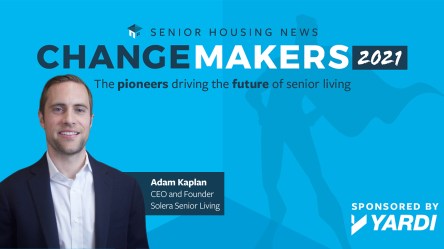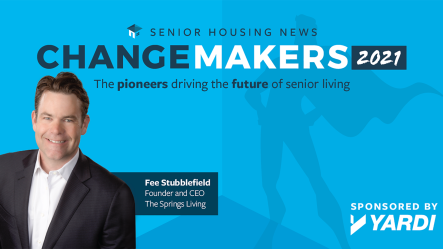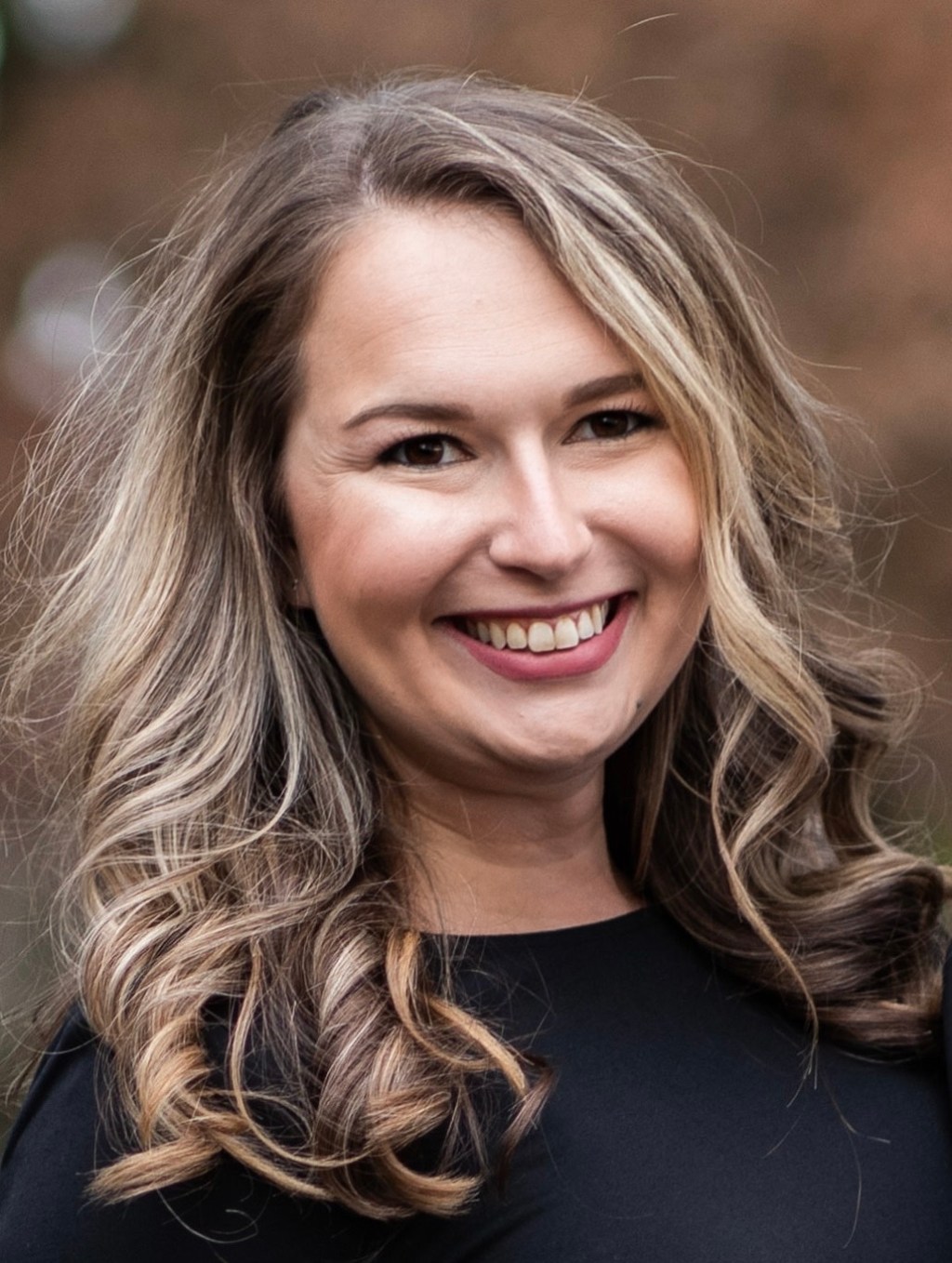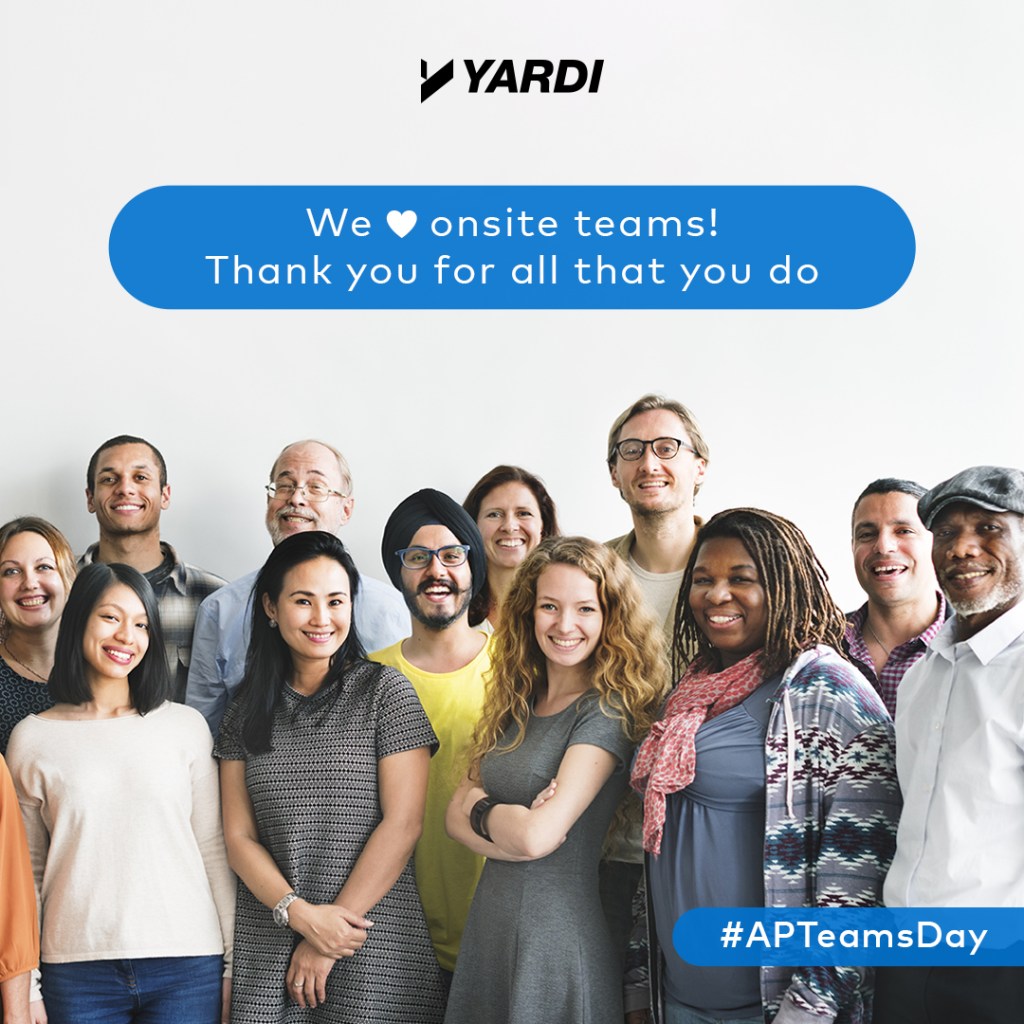We love sharing positive stories from senior living communities, especially those that involve residents working together to make a difference. That’s certainly the case with Yardi client Harmony Senior Services, whose residents at their Greensboro, North Carolina community have been aiding the local homeless population. Residents come together With a dedication to help those in need, residents at Harmony at Greensboro have been working to aid the local homeless population for the last six months. It was resident Peggy Yow who came up with the idea — creating sleeping mats from plastic grocery bags — and her fellow neighbors joined in to help. “I thought of all the cold nights, the wet ground, that maybe this will help them at least sleep and rest a little better,” said Yow to WFMY-TV. The inspiring story was also recognized by Argentum Senior Living, who shared it in their e-newsletter. If that alone doesn’t show how caring these senior living residents are, just wait! Each sleeping mat required over 2,000 grocery bags to be completed. It was no easy undertaking, but the Greensboro residents saw the value in the project — helping those in need. Their goal was to make 12 mats in total. Yow shared that the project “has brought us much closer, we know each other better. It’s been very enlightening for each of us.” About Harmony Senior Services Harmony Senior Services was founded on the belief that people deserve higher quality senior living options. They proudly provide the same excellent care and love to residents and their families as they would their own. Their goal is to meet each resident’s individual needs while exceeding expectations. Harmony offers living options such as independent living, assisted living and memory care. And for Harmony at Greensboro,...
Control Costs
With Strategic Energy Management
The residential real estate sector is going to see a few changes in the near future as businesses continue to open up their office environments, travel and immigration resume to pre-pandemic levels and Canadians gain a sense of confidence in venturing out of their homes on a more regular basis. Though human interactions will see a subtle shift from the pre-pandemic era, how residents use their living spaces will continue to evolve. This is an opportunity for real estate companies to re-evaluate the ways in which they manage their properties. Regardless of their approach to marketing, resident relations and other operations – the value of a viable energy strategy is gaining importance in the Canadian real estate sector. Residential property owners can increase asset values, boost stakeholder satisfaction and ensure compliance by adopting smart energy consumption practices. That’s best done strategically, especially as costs remain under heavy scrutiny and ESG accountability assumes ever-greater importance. First step: Utilize utility data to minimize costs Understanding and documenting energy consumption across a portfolio should be the first step in building a value-add energy strategy. Why? Because this operational area is one of a property’s largest controllable operating expenses. Understanding and harnessing utility data can make a property more valuable, more likely to retain residents, more easily marketed for sale, more compliant and more attractive to prospective tenants and investors and less likely to require concessions to rent. Advanced automated utility expense management systems also reduce duplicate payments, late fees, system interface errors and inaccurate spend measurements. They replace the cumbersome process of tracking consumption in excel, and wading through stacks of paper utility bills with digital invoice transmission and automated usage validation. Along with creating a single solution for invoice tracking, payments, budgeting and reporting, these systems...
Forbes Cloud 100
Yardi makes list again
Yardi has been named for the sixth time to the Forbes Cloud 100, the definitive list of the top 100 private cloud companies in the world. Yardi was a member of the inaugural Cloud 100 in 2016, landed at No. 34 for 2020, and is No. 50 this year. “We’re honored that Forbes has recognized Yardi once more for our industry-leading cloud solutions,” said Jay Shobe, senior vice president of cloud services at Yardi. “To consistently rank among these prestigious companies reflects the efforts of our employees and the tremendous support of our clients worldwide.” The evaluation process involved four factors: market leadership (35%), estimated valuation (30%), operating metrics (20%), people and culture (15%). The Forbes Cloud 100 judge panel, which includes 34 major public cloud company CEOs, was responsible for selecting and ranking the top 100 companies globally. “The companies of the Cloud 100 list represent the best and brightest emerging companies in the cloud sector,” said Alex Konrad, senior editor at Forbes. “Every year, it gets more difficult to make this list — meaning even more elite company for those who do. Congratulations to each of the 2021 Cloud 100 honorees and to our 20 Rising Stars up-and-comers poised to join their ranks.” “The private cloud ecosystem continues to see historic rates of digital transformation,” said Byron Deeter, partner at Bessemer Venture Partners. “Private cloud valuations are getting bigger as the market’s appetite for cloud continues to grow. These founders represent the absolute best in cloud computing today, and they appear likely to follow in the footsteps of our esteemed Cloud 100 alumni. Congratulations to these cloud leaders!” The Forbes 2021 Cloud 100 is published online at forbes.com/cloud100 and will appear in the September 2021 issue of Forbes magazine. About Bessemer Venture...
Edward Rose & Sons...
Celebrates 100 Years
Yardi is excited to help Edward Rose & Sons celebrate its 100th anniversary. The real estate development and management company has leveraged tradition, innovation and technology to reach new heights while honoring long-held values. History in the making Edward Rose & Sons began as a single family home builder with four properties constructed in 1921. By the 1960s, the organization expanded to multifamily housing. As self-proclaimed “frontier developers,” the company selected sites in minimally developed suburban areas. The properties address the needs of the growing working class. With this innovative strategy, Edward Rose & Sons helped to nurture a new era of successful young adults and thriving new towns. Since then, Edward Rose & Sons has established its name in luxury apartments and senior living. With each new vertical, the organization relies on its founding principles to guide the way. “We want to make sure that the residents get a good value for their money. That’s why we’ve been successful over the years,” says Greg Stowers, division manager at Edward Rose & Sons. The Michigan-based organization celebrates its centennial with a presence in 18 states. Properties represent 65,000 multifamily units with nine under construction in Washington, Michigan, Wisconsin, South Carolina and Illinois. The new properties will add 1,000 units to the Edward Rose & Sons portfolio next year. Old meets new: technology ushers Edward Rose & Sons into the future Technology is an integral part of the smart growth strategy for Edward Rose & Sons. The developer implements Yardi Job Cost, Asset IQ, and Revenue IQ for efficient project management and optimal rent performance at its properties. The company that began through word-of-mouth referrals still values its reputation. To manage its online reputation, Edward Rose & Sons relies on Yardi RENTCafé CRM for its...
Changemakers Series
Recognizes Adam Kaplan
In a one-of-a-kind series sponsored by Yardi, Senior Housing News (SHN) is recognizing pioneers driving the future of senior living. Deemed 2021 Changemakers, these leaders have taken unique steps to transform their organizations — tackling unforeseen challenges along the way. Say hello to Adam Kaplan Adam Kaplan is an accomplished Yardi client and the founder and CEO of Solera Senior Living. Selected as a member of this year’s Changemakers class, Adam has shown that taking an innovative approach to senior living is key to evoking positive change. Since founding Solera in 2016, he’s pursed a focused strategy to take on complex projects — helping Solera grow into an organization with a hospitality-driven culture, empowered teams and a commitment to resident care. With insights captured in his Changemaker interview, Adam shares where Solera is headed next, how he’s driven change and what he’s learned during his years in senior living. Here’s a highlight: As you think back on your career in senior living, what changes have you driven that you’re especially proud of? Many of the changemakers [in this series] are the pioneers who paved the way for people like myself. I don’t see myself as a changemaker, I see myself as somebody who has been fortunate enough to build on a foundation that was put in place by the incredible senior living entrepreneurs who came before me. That said, the industry today is still led by many of those pioneers. While we’ve attracted a lot of talent to the industry, I think we’ve done a pretty poor job of attracting talent into operations as the industry matures. Many entrepreneurs have come into the industry through startups in technology, services and media, but the same cannot be said for operating companies. When I left Senior...
Arizona Affordable Housing...
New LIHTC Supplement
In Arizona, there are only 26 affordable and available rentals for every 100 extremely low-income renter households, reports the National Low Income Housing Coalition (NLIHC). State leaders have approved a state housing tax credit to offset the affordable housing shortage. New and expanded programs for affordable housing in Arizona The program provides $4 million per year in state credits until 2025. It is supported by the 4% federal low-income housing tax credit (LIHTC) program. Combined, builders can seek relief up to 50% of the project cost. Analysts suggest the credits will prompt about $160 million in investments during that period. “That will make a significant dent in our housing shortage in Arizona,” says Tom Simplot, director of the Arizona Department of Housing (ADOH) in an interview with Affordable Housing Finance. Additionally, the ADOH will offer more programs that work in tandem with the 4% LIHTC. These programs result in $21 million in state and national housing trust funds. “What we learned from our research of other state programs is that it’s very impactful and powerful to couple the state credit with the 4% credit,” says Ruby Dhillon-Williams, assistant deputy director of housing and community development. To further stimulate growth, ADOH is revamping its qualified allocation plan (QAP). The current plan includes one cycle of 9% credits and 4% credits less consistently. The new programs are slated for release in QAP 2022. The national affordable housing crisis Per the NLIHC, there are fewer than four affordable rental homes for every 10 extremely low-income renter households nationwide. Not a single state has an adequate supply of rental housing to meet the needs of the poorest renters. As a result, “70% of extremely low-income renter households are severely housing cost-burdened, spending more than half of their limited...
Brightview Accolade
Fortune Best NY Workplaces
Yardi is pleased to applaud client Brightview Senior Living — a Baltimore-based company that’s delivered over 20 years of senior living services — for earning a spot on the Fortune Best Workplaces in New York™ 2021 list. The impressive accolade comes after Brightview ranked on the Fortune 100 Best Companies to Work For® list earlier this year. Brightview’s company culture gains recognition In addition to operating vibrant senior living communities and delivering excellent care, Brightview has created an exceptional culture for their employees. They’ve developed a workplace where associates feel empowered and cared for — and their hard work hasn’t gone unnoticed. Earning the Fortune Best Workplaces in New York™ recognition is something to be proud of. The accolade is largely based on direct feedback from employees, whose survey results are benchmarked against other organizations. Placement on the Fortune list means Brightview’s New York associates have spoken volumes about the company’s enriching environment. Brightview owns and operates three communities in the state including Brightview Lake Tappan, Brightview Sayville and Brightview Tarrytown. “We are THRILLED to announce that Brightview has ranked on the Fortune Best Workplaces in New York™ 2021 list for its exceptional company culture,” wrote Brightview on LinkedIn. They also announced the news on their company blog, where President Doug Dollenberg celebrated the recognition. “We know that if we’re a great place to work, in turn, our communities will be a great place to live,” shared Dollenberg. “For Brightview associates to have provided such extraordinary feedback during the challenge of a pandemic is truly humbling.” Some survey feedback from Brightview associates included: 94% believe “You are made to feel welcome when you join the company”93% believe “I feel good about the ways we contribute to the community”92% believe “My work has...
Future of Elder Care
Senior Living in Canada
COVID-19 has changed the way we look at senior living. It’s forced us to question the structures and policies currently in place — the systems designed to care for our aging population. How and where do seniors prefer to age? Are the current systems reflective of their preferences? How did COVID-19 shed light on the values underpinning these systems? These questions were covered in a recent webinar: The Future of Elder Care in Canada. Presented by The Empire Club of Canada, the webinar gathered experts including: Panelist Linda Knight, CEO at CarePartnersPanelist Dr. Samir K. Sinha, Director of Geriatrics at Sinai Health System and University Health NetworkModerator André Picard, Health Columnist at Globe and Mail With important questions posed by André, Linda and Samir’s insightful conversation revealed how Canada’s healthcare system needs redesigning. From exposing society’s view on elder care, to discussing the effects of COVID-19 to explaining the overwhelming need for home care support — they shared eye-opening information. Let’s take a look. COVID-19 reveals need for home care options Starting the panel with information on COVID-19’s effect on Canada’s seniors, the discussion turned to Linda, who explained the flaws in the country’s healthcare system. Mainly, how the shortage of public support workers (PSWs) and nurses working in home care has increased in recent years, with that trend being further amplified by COVID-19. “The PSW shortage hit us about four or five years ago, but what also has come shortly behind that is the nursing shortage in home care. We’ve lost pace with being able to pay them what they could make in a hospital — so there’s been unintended consequences,” explained Linda. She continued by noting that when COVID-19 first hit, a large portion of home care nurses made the switch...
Changemakers Series
Honors Fee Stubblefield
This year, Senior Housing News (SHN) has honored a variety of senior living leaders through their Changemakers series. And without fail, each member of the Changemakers class is inspirational, unwavering and transformative in their approach to industry obstacles. That certainly describes Yardi client Fee Stubblefield, founder and CEO of The Springs Living. Headquartered in McMinnville, Oregon, The Springs Living owns and operates multiple senior living communities across Oregon and Montana. Fee started the company in 1996 with a mission to create communities that felt like home and since then, he’s elected positive change in the company’s design and operations. That’s exactly why he was chosen as a 2021 Changemaker and interviewed in this special series, sponsored by Yardi. In this excerpt from his SHN interview, you’ll learn how Fee has led The Springs Living through a period of change — and how he’s preparing for the future. Plus, you’ll get an inside look at Fee’s approach to innovation, his dedication to senior living and his tolerance for risk. Do you agree that change-makers are risk-takers, and secondly, how do you describe your own personal tolerance for risk? I would say that we’re probably categorized as both innovators and risk-takers, but I don’t see it that way. I don’t see it as risky. This is what we’ve learned. This is what we believe the market wants and we have hedged it in ways that we think makes sense — that eliminates risk. It’s been really fascinating to see how different people look at the mountain from a different side. When you go on a hike, you look up the hill and you think, okay, I’ll remember that spot when I get there, and then when you get up there, it looks completely different. Our view...
Seniors’ Housing Survey
Vacancies & Rent in Canada
The results are in! Conducted in April and May of 2021, the Seniors’ Housing Survey collected information on rent prices, vacancy rates and more in seven regions across Canada. Ready to be explored, the survey revealed eye-opening findings on the Canadian seniors’ housing market. Let’s take a look: The findings: Higher vacancies and rent prices Starting with vacancies, the survey showed that vacancy rates in seniors’ residences are on the rise in provinces throughout Canada, with the exception of two. Interestingly, the vacancy rate for standard spaces grew 7%, meaning it now stands at 15.6%. And although an increase in supply was found, the number of residents has actually decreased, or only moderately increased. In turn, higher vacancy rates have become the new normal. The survey suggests that the weak demand could be a result of reluctancy to move into senior living communities during COVID-19. The seven Canadian regions assessed included: British ColumbiaAlbertaSaskatchewanManitobaOntarioQuebecAtlantic Canada Quebec showed the highest capture rate in the country, despite the decrease in resident retention. Here 17% of seniors aged 75 and older lived in seniors’ housing, whereas in other Canadian provinces, this proportion ranged from 5-10%. And in terms of regional average rents, five out of seven provinces saw in increase in price. The two exceptions, in which rent prices lowered, were Prince Edward Island and Newfoundland & Labrador. A guide for senior living providers As vacancy rates and rent prices rise in Canada, senior living providers need effective tools to attract new residents, streamline operations, enhance resident care and more. The Yardi Senior Living Suite contains everything providers need to create a foundation for success — with tools united on a single platform. Here are three ways the Yardi Senior Living Suite can benefit you: Reach more seniors who are searching for a place to live with advanced search marketing services. RentCafe Reach helps with SEO, pay-per-click advertising, reputation management and moreReduce manual data entry, meet compliance obligations and optimize resident care with Long Term Care, a comprehensive platform designed for Canadian providersNurture your leads and boost occupancy with RENTCafé Senior CRM, a mobile-friendly customer relationship management tool Read the entire 2021 Seniors’ Housing Survey to explore more findings. To learn how Yardi supports senior living in Canada, start...
Single Connected Success...
Anthology Senior Living
To effectively serve their communities while navigating a growing portfolio, senior living organizations need support. For many, implementing integrated senior living management software is key. Meet Anthology Senior Living, CA Venture’s senior living platform that develops, acquires and operates 34 senior housing communities across the United States. Their portfolio includes independent living, assisted living and memory care with uniquely designed communities that provide residents with meaningful hospitality and care. Kim Smart As they grew and expanded their community footprint, Anthology needed the right software solution — a single connected system built for the unique needs of senior living providers. They welcomed the Yardi Senior Living Suite. To dive deeper into the importance of utilizing a single connected solution, we sat down with Kim Smart, director of systems and support at Anthology. Smart discussed the organization’s journey to now operating 34 communities, explaining the role the Yardi Senior Living Suite has played in driving Anthology’s success. Here’s a highlight: The Challenge: Navigating a Growing Portfolio With a range of communities to serve and rapid expansions underway, Anthology Senior Living needed a solution that did it all. They searched for senior living software that combined resident care, marketing, sales, finance and more on a single platform. To fulfill the needs of their many communities, Anthology chose a single connected solution they knew they could trust — The Yardi Senior Living Suite. The Solution: Yardi Senior Living Suite The Yardi Senior Living Suite is powered by a secure cloud-hosted database and unites property management, finance, marketing, resident care and more on a single connected solution. The Story: Single Connected Success, Efficiencies Gained & Unparalleled Support With extensive experience in systems analysis, Director of Systems and Support Kim Smart knew the value of interconnected tools. Whether it be...
NAA Grants
For Multifamily Innovation in Diversity + Inclusion
This is the final week to submit applications for The National Apartment Association (NAA) Innovation in Diversity Grant (IDI). The program aims to advance diversity and inclusion in the rental housing industry through impactful education and hiring practices. NAA seeks to “inspire the next generation and strengthen those whom we work and exist to serve.” To do so, NAA has designated $25,000 per fiscal year towards the IDI grant. NAA member associations, property management firms, supplier partners and related organizations are eligible to apply. Creating a more equitable multifamily industry To qualify, participants are encouraged to align their program objectives with the ideals of the NAA Diversity and Inclusion Vision Statement. Additionally, the proposals must reflect the NAA’s dedication to an inclusive and supportive workforce environment that is rich in diversity. Applicants must propose innovative ideas that will result in meaningful contributions to the multifamily industry. NAA supports projects that fall into three main categories: Education Programs should demonstrate methods to improve diversity, inclusion and awareness within the applicant’s organization. Leadership Programs should enhance the presence of diversity among leadership and boards within their organizations. Such programs may create specialized training tracks for marginalized groups. D&I Projects Programs should bolster the presence of underrepresented groups at all levels in the industry. Opportunities may include but are not limited to scholarships and innovative steps towards more equitable hiring practices. Selecting finalists Applications will be received by the NAA Diversity and Inclusion Committee. Evaluators analyze each applicant’s potential for measurable outcomes, detailed budget, program timeline and support of NAA’s Diversity & Inclusion vision. Home Depot Pro: supporting diversity and inclusion in multifamily housing Home Depot Pro is a proud sponsor of the IDI Grant. The world’s largest home improvement retailer released a statement, stating, “We are...
Back to the Office
With Yardi Corom
Have you ever heard the phrase, “practice what you preach?” It’s a call for practiced values to align with value statements. At Yardi, we’re in the business of creating software solutions that are so robust and user friendly that even we would use them—and we do. Our latest release, Yardi Corom, makes lease management efficient, simple and transparent. We’ve implemented Corom at home to navigate back-to-office protocols. You Meet Corom Corom is a workplace management solution for commercial occupiers. The Corom suite simplifies end-to-end corporate real estate organization such as lease management, occupancy tracking and desk hoteling for flexible workplaces. Discover additional powerful features in Corom. The platform is scalable to any size business and the needs of any corporate occupier. We are using Corom for back-to-office protocols in our 20 U.S. offices. Yardi implements Corom for desk hoteling In July, Yardi offices began to reopen on a rolling schedule. To enhance safety and convenience, employees are able to make workspace reservations through Corom. The platform serves as an internal occupancy tracking and desk hoteling system for offices that are reopening at partial capacity. Currently, settings in Corom ensure that offices operate at no more than 25% seating capacity. This permits ample space between active desks during occupancy. The scheduling system also permits time for cleaning desks and equipment between uses. Corom lets workers customize their work experience Customization options within Corom permit commercial providers to promote greater occupant satisfaction. At Yardi, each workspace includes two monitors, a mouse, keyboard, phone, and one of two docking station styles. Employees can select the docking station that they need when they’re making the reservation. Employees bring their laptop and headset or request a loaner set. Employees can even reserve the desks that they used before office...
Tech for Security + Efficiency
Executive Briefing, Canada
Do you want to streamline payables and purchasing, expedite approvals and eliminate paper? It’s not too good to be true. You can with a robust cloud-based procurement solution. Your industry peers are already experiencing success, and it’s simpler than you think. The recent Yardi Executive Briefing offered multifamily property specialists an inside look at the power of modern procurement software. Peter Altobelli, VP and general manager, Yardi Canada facilitated the session, “The New Age of Canadian Residential Real Estate” with clients Christine Williams, VP, national operations and administration at QuadReal Property Group and Brian Turpin, CIO of Greenwin Corp. Early tech adaption resulted in efficiency and agility Both QuadReal and Greenwin embraced technology long before the pandemic began. The organizations actively sought solutions that promoted efficiency, accuracy and sustainable growth. Williams laughed, “QuadReal is still fairly young but from the beginning, we embraced the digital workflow and got rid of our paper trail.” Turpin added, “Proptech is exploding with different technology. Everything is paperless and more efficient. I joke that even the light switches are under my domain because everything is connected to the internet.” Technology isn’t decorative. For both organizations, technology is a core part of the business that enables greater efficiency, transparency and collaboration. By embracing technology, their teams were better prepared to shift to remote work environments and online services. When many offices closed or reduced operating hours during the pandemic, QuadReal seamlessly achieved business continuity with Yardi Procure to Pay, automated vendor management, automated procurement (including a comprehensive marketplace), electronic invoice processing and outsourced vendor payments. “Yardi Procure to Pay offers us a better way to keep track of invoices and keep us on time with our payments to vendors,” said Williams. “The Yardi Payscan, community-initiated purchase orders and approval workflows were matched to internal authority levels. Centralized invoice processing teams would receive the digital invoices and match them to the purchase orders with a few added tolerances. They would then be en route for payment approval and vendors could be quickly paid with Yardi Bill Pay.” Greenwin, which had already adopted Procure to Pay, continued operations as usual. The automation of the entire procurement life cycle was driven by benefits seen in streamlining resident transactions. “The key piece is document management,” explained Turpin. “In tech, a lot of things we do don’t have a visible impact. But when you’re tearing down unused filing cabinets and renovating rooms to add desks, it’s a visible way to see how tech benefits the company.” Buy-in and adoption made easier Adoption is around 95% at Greenwin. For buy-in, Turpin and his team positioned technology as an empowerment for success. “Yardi created a custom onboarding video for us that we send to vendors,” he said. “They see that they don’t have to mail anything. We empower our suppliers to upload their invoices to VendorCafe, to see statements and automate their process. It has a trickle-down effect.” Yardi Marketplace, an online procurement platform, was perhaps one of the easiest buy-ins for Greenwin. The intuitive platform already fit into users’ daily lifestyle. “It’s a great example of the consumer world integrating with the enterprise world. Most people shop online and we can leverage that. From a user perspective, there was great adoption because it streamlines, prepopulates fields and automates processes,” explains Turpin. Williams agreed, “Our team shops on Marketplace. The PO goes through its workflow. It’s approved, all the coding is in there and the payment is out of the door. Our team can even create a list of favourites, so their most popular products are easy to find. They’ve learnt to love the simplicity.” Improved security through portal-based transactions Secure online portals help to decrease risk to clients and vendors. In the past, vendors sent invoices via email or the postal service. This resulted in a greater risk of phishing scams, lost postal mail and delays, as well as cheque...
Streamline Unit Turns
Improve Your Maintenance IQ
Want to improve your net operating income (NOI)? Consider your turn process. Whenever a unit is unoccupied, you’re missing out on income. Vacancies during the turn process are no exception. By decreasing the time that it takes to turn a unit, you can maximize your income and support better NOI. Below are a few practical tips to help you expedite turns, save time and money. Expedite services with cloud-based, integrated property management software. Y Problem: You’re currently managing turns on paper, spreadsheets or client-server applications. This means a lot of manual data entry, printing, slower communication and wasted time. All of those delays result in a longer timespan to complete work orders and get new residents into units. Solution: Reduced turn time starts in the leasing office. Gain full visibility into your site with cloud-based property management software that integrates with your maintenance and procurement solutions. This powerful combination automates processes from the second that your resident gives notice. Automation and integration can help you reduce vacancy days and increase net rental income. Help techs save time and money with mobile-ready software. Problem: Your techs waste a lot of time trekking back and forth between the leasing office, stockroom and units. Their progress on work orders is a mystery throughout the day, and it’s difficult to determine where you can find greater efficiencies during turns. Solution: Fewer trips to the leasing office, stockroom and store mean more time saved. A mobile maintenance app empowers techs to connect to the cloud, log work order progress, completion and images while on the go. Transparency into the turn process allows you to identify where additional training or greater efficiencies may be helpful. A customized online catalog takes the errors and guesswork out of procurement. Problem: Maintenance techs rely on outdated techniques to log the products needed to complete work orders. As a result, they sometimes request the wrong parts or incorrect quantities. Trips to local stores deduct time from working on units. To further complicate the process, prices and availability vary by location. Solution: Curate an online catalog of common products needed at your property. This makes it fast and easy for maintenance techs to submit requests for the correct product. You can also streamline orders to ensure they get the best deal with the approved supplier each time. Using a mobile app, techs can then submit requests for required materials using the curated list. They can immediately log what they need while in the unit rather than waiting until they get back to the office. A live list displays the correct product type and quality, resulting in fewer errors, more consistent pricing and more time saved. Backordered item? Techs can automatically log the information to keep the front office and residents up-to-date. When the techs get the right products in a timely manner, you can turn your units faster. Simplify approvals while maintaining control of the budget. Problem: It’s a struggle to control spend while maintaining a quick approvals process. Solution: Enhance policy compliance with pre-approved products. Managers can then quickly approve orders with greater confidence using a mobile procurement app. There is no need to make frequent trips to the office, sign paper checks, or delay orders with paper processing. Join a free webinar to learn how you can speed up turns and reduce...
Gain Resident Feedback
With RentCafe Senior Living
A recent article by McKnight’s Senior Living relayed the findings from an interesting Activated Insights report. Surveying 63,807 senior living residents and family members, the report revealed the consequences that arise when operators fail to check the pulse of their communities. And to effectively stay in tune with their communities, operators need to collect resident feedback — meaning residents need a secure way to communicate their wants and needs. Blind spots for senior living operators According to the report, senior living operators often miss the mark when it comes to measuring resident experience. And as communities reopen after pandemic closures, measuring resident satisfaction is more important than ever. Here’s what Activated Insights found: In communities with a lower net promoter score, the data shows that word-of-mouth referrals are low — and resident move-outs due to dissatisfaction are high. Net promoter scores, a measure of “customer” satisfaction, largely affect a consumer’s perception of an entire brand, according to Activated Insights. For senior living operators, a low net promoter score can negatively impact how prospects view their communities. The report revealed that blind spots are costing senior living organizations up to $225,000 of earnings, or $2.8 million of value per community. “With 2021 average net promoter scores for seniors housing averaging a negative eight — on par with CVS / Cigna / Comcast customer experiences — CEOs are missing the data to forecast profitability,” relayed McKnight’s Senior Living. While some organizations do check the pulse of their communities to ensure they’re on the right track, for those that don’t, these challenges may be unavoidable. What can they do? Activated Insights suggests establishing customer engagement scores by surveying residents and family members in real time. This means senior living providers need the right channel and a secure, seamless method for collecting feedback. Gain feedback through a secure online portal Yardi RENTCafé Senior Living is a secure online portal that helps families stay connected. A primary benefit? A survey feature that allows residents and families to submit feedback whenever, wherever. By offering residents a way to provide confidential feedback, senior living providers access crucial information at the click of a button. This creates the ability to measure resident satisfaction, prevent move-outs and manage their community’s reputation. In essence, RentCafe Senior Living helps providers turn feedback into actions — and improve operations across the board. Curious about the portal’s other key features? Here are four additional benefits of RENTCafé Senior Living: Keep families informed with health data, such as medications and vitals, available in real time from Yardi EHRAllow residents and families to electronically sign and manage documents, review financial statements, make bill payments and submit maintenance requestsMake announcements, post comments on a bulletin board and exchange secure messages right from the portalCreate a calendar of activities where residents can sign up and their loved ones can see they’ve attended As the pandemic has largely affected senior living communities, it’s imperative for providers to check in with their residents. With a secure online portal — one equipped with a convenient survey feature — providers never miss the chance. To learn more about RENTCafé Senior Living, connect with...
#APTeamsDay
Celebrating Onsite Teams
We are excited to celebrate the second annual Apartment Onsite Teams Day on Wednesday, July 14! This day has been designated by the National Apartment Association to applaud onsite property teams across the country for their daily contributions to resident happiness and industry success. Extending our gratitude Onsite team members keep apartment communities together. In many instances, they have guided, led, and sacrificed for the sake of their teams throughout the pandemic. On this day, we want to express our thanks to onsite team members for all they do for residents, guests and teammates. They have been our first-responders and essential workers during this challenging time, allowing for continued success and safety through it all. On this #APTeamsDay, Yardi wants to recognize the difficult conditions that onsite team members across the country have faced over the past year and thank them for their continuous hard work and dedication. How to celebrate #APTeamsDay Apartment Onsite Teams Day celebrates team members such as leasing agents, maintenance staff, administrative assistants, concierges, landscaping teams and more. One way to express your gratitude is to recognize the work these team members do daily and thank them for being onsite during a global pandemic. Our onsite team members have had to go above and beyond to adapt to new conditions, while risking their own safety to prioritize that of their residents. Honor leasing agents by thanking them for being the face of the property and quickly pivoting to create new, safe customer experiences for renters. Thank your maintenance staff for working tirelessly over the last 16 months while people were home more than ever before. If you have the ability and budget, you might think about treating team members to a coffee or lunch. In one example from last year,...
Will Telehealth Be
The New Normal
Before the pandemic, telemedicine – defined by the American Academy of Family Physicians as the use of technology to deliver care from a distance, with telehealth comprising the technology and services providing that distance care – reached only about 4% of the patient population. With distancing mandates and stay-at-home orders in place in April 2020, the practice accounted for more than 43% of primary care visits, up from less than 1% two months prior, according to the U.S. Department of Health and Human Services. In March 2020, less than 20% of the population had experienced a telehealth appointment; about 61% had a year later. Sustaining patient care While telehealth doesn’t apply to procedures such as biopsies, lab tests or vaccine injections, its use of mobile devices, live audio and video, and smart digital tools enables follow-up visits, medication instructions and consultations in areas ranging from diabetes and dermatology to mental health. “We are not using technology to replace the doctor-patient relationship. We’re using technology to supplement and support that relationship,” says Deidre Keeves, director of connected health for UCLA Health in Los Angeles. Ada Stewart spoke to telehealth’s benefits for her family medical practice in Columbia, S.C, during the pandemic. “People were able to receive access to healthcare. We were able to reach out to our patients who were afraid to come into the office to be seen. It really afforded that opportunity to still take care of our patients and do so in a safe way,” she told HealthDay News. So will telehealth – which by one estimate could account for more than $100 billion of U.S. healthcare spend by 2023 –maintain a central role in medical care delivery? Or, absent the pandemic’s extraordinary circumstances, could it fall into relative obscurity? Could turn...
Housing + Self-Sufficiency...
I Rise, from New Directions
Access to affordable housing can be a life-changing experience for residents, especially when residential units are paired with social services. HUD’s Family Self-Sufficiency (FSS) program is a perfect example. The goal of FSS is to transform individuals and families by stabilizing housing and providing services like childcare, education, physical and mental health, food and other tools to overcome barriers to increasing income. New Directions is a mission-based affordable housing provider based in Louisville, Kentucky. HUD recently approved New Directions to administer FSS for residents living in seven of its properties. New Directions calls its FSS program “I Rise,” a title inspired by the poem “Still I Rise” by Maya Angelou. New Directions is led by Bridgette Johnson, its chief operating officer. Bridgett studied the success that public housing agencies (PHAs) were having with FSS and found that most of the FSS graduates she spoke with had moved on to home ownership, started their own business, or both, within a few years of graduating from the program. Inspired by those success stories, Bridgette created I Rise for New Directions, and conducted extensive fund raising to pay for staffing. FSS does not pay administrative fees for affordable housing providers, a significant difference from PHAs’ ability to pay staff with a portion of FSS funds. Solving the “Benefit Cliff” Affordable housing and social services workers often refer to the “benefit cliff” as a metaphor to describe how access to programs can suddenly be taken away when participants’ incomes rise. That can cause households to lose access to support before they are entirely self-sufficient. Under FSS, participants can maintain enrollment in social services even as their income increases. FSS prevents participants from falling off the benefit cliff by requiring households to save a portion of their increasing wages...
Changemakers Series
Meet Doug Leidig
To earn a spot in this year’s Changemakers class, you have to be a special type of leader. It takes a natural catalyst for change — and someone who’s an exceptional visionary in the senior living industry. That describes Doug Leidig, president and CEO of Asbury Communities. Since joining the Maryland-based nonprofit over 20 years ago, Doug has dedicated himself to enhancing the lives of seniors. And since becoming president and CEO in 2015, he’s implemented fresh ideas to transform Asbury into a diversified aging services organization. His drive and innovation earned him the Changemaker title for 2021. Brought to you by Yardi and Senior Housing News (SHN), interviews are conducted with Changemakers like Doug. This gives you an inside look at their path to leadership, plus a chance to access their advice and expertise. In the below excerpt from Doug’s SHN interview, you’ll learn how he’s creating a lucrative future for Asbury Communities. Doug also talks about how he’s pushed through obstacles in the face of change. Can you walk me through the evolution from a CCRC provider to more of an aging services model? Was it strategic or did it come together piece by piece as you diversified the company? It’s been purposeful, but it’s taken us about three or four years. I had been convinced for quite some time that standalone senior living CCRC businesses are at risk. Maybe not tomorrow or five years from now, but moving down the line, I think there are risks. We all know that we have to change our offerings on our campuses, especially to meet the next generation’s demands. I also knew that 98% of our revenue comes from CCRCs, from the resident rates, so you have to think, “How do I...




















